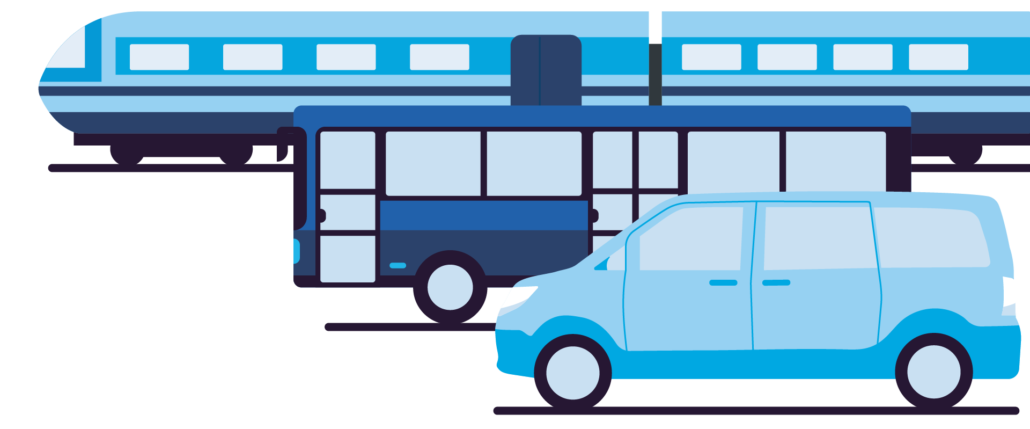Fintech, adtech, healthtech, edtech… what were once buzzy neologisms describing different industries have quickly become part of our everyday vocabulary. When industries finally embrace technology after witnessing its impact on the bottom line, the marriage justifies a new name.
Enter public transit. It’s a sector that hasn’t seen significant change in nearly a century — until now. The past decade alone birthed an explosion of pioneering solutions that use technology to improve public transportation. This innovation whirlwind has led to inefficient, separate systems that are largely disconnected from one another. As a result, we oscillate among a ton of terms — microtransit , micromobility, demand-responsive transport, multimodal trip planning, paratransit , fixed-route integration, to name a few — all of which mean different things and accomplish different aims.
At Via, we recognize the opportunity in front of us is massive — $450B according to our estimates — large enough to warrant its own category. One that we’re defining. Say hello to TransitTech.

TransitTech has a nice ring to it. But what does it do?
A lot. It’s the app that alerts you if your train is running late; the tool that shows you all of the different ways to get from point A to point B; or the shared shuttle you hail, bridging the gap from the train station to your office. It’s even the data that’s now available on who rides public transportation or who you’ve come into contact with during that ride — if technology is being used to evaluate and advance the public transportation systems of today, it falls under the TransitTech umbrella.
But it takes more than an app to be admitted into the TransitTech family. These services must serve a larger purpose, blending technology with transportation in order to solve for a greater good. Whether it’s improving the environment in the world’s most congested cities, or increasing equity and accessibility for those left behind by traditional forms of transportation, TransitTech has to make the world a better place — not contribute to the problem.

How is it beneficial?
We don’t need to tell you that our communities are hurting, and that transportation has changed forever in the wake of the pandemic. Congestion is through the roof, and transportation has become the largest contributor to US carbon emissions. The result? Dirty, smelly, expensive cities, in which getting around is either almost impossible or seriously unpleasant. Or both. In less urban areas, transit networks are so infrequent and inefficient that residents typically end up resorting to private vehicles.
Transportation is long overdue for its first true technological revolution. In the same way that fintech has let us all pay for things with the tap of a smartphone, TransitTech providers are inventing completely new ways to help us move at the touch of a button. In a way that’s not only more efficient, but also more sustainable. Not to mention more affordable and often more comfortable for the rider.
These meaningful shifts across a global industry aren’t going to be the result of tech companies alone. Collaboration with governments, public transportation authorities, and operators worldwide are essential for TransitTech to fully take flight. We’re encouraged by how much of this is already happening, especially when it comes to launching microtransit, but there’s still work to be done.
Step one: You might be a microtransit expert or a paratransit know-it-all, but you’re ready to learn about all of the other technological wonders that fall within the TransitTech family. We’ve got you covered.
Your education begins here:
- What is microtransit?
- Modernizing paratransit with TransitTech.
- TransitTech is the key to safe student travel.
- Employers use TransitTech to get their teams back to the office.
- Universities are increasing student safety with technology-powered campus shuttles.
- Cities are using TransitTech to deliver essentials during the COVID-19 pandemic.




